Retro Replay Review
Gameplay
Thinking Games 2 delivers a diverse gameplay suite that balances lighthearted arcade action with educational minigames. Players assume the role of Billy Bat, racing off to airports, caves, and world landmarks in a playful contest against Robby the Rabbit. Each minigame is presented as a chapter in Billy’s globetrotting adventure, encouraging children to explore new cultures while mastering progressively harder challenges.
(HEY YOU!! We hope you enjoy! We try not to run ads. So basically, this is a very expensive hobby running this site. Please consider joining us for updates, forums, and more. Network w/ us to make some cash or friends while retro gaming, and you can win some free retro games for posting. Okay, carry on 👍)
The first educational minigame, the Matching Game, tasks players with pairing a country’s name to its flag, national costume, or iconic building. With six levels of difficulty, this mode scales from simple two-option matches up to six-option challenges, ensuring that beginners and more confident players alike remain engaged. Feedback is immediate and clear, with correct matches highlighted in green and brief cultural facts popping up to reinforce learning.
Next comes the Puzzle section, which features two distinct modes: Puzzle Completion and Jumbled Puzzle. In Puzzle Completion, players assemble a jigsaw to reveal a scene from local culture, while in Jumbled Puzzle the pieces are already in place and must be swapped to restore the image. Both modes offer clickable hotspots that provide deeper insights into regional customs, languages, and traditions. With six difficulties apiece, these puzzles offer plenty of replay value and gradually heighten visual and spatial reasoning skills.
Rounding out the package are two arcade-style challenges: “The Mission to Rescue Billy Bat” and “Billy Bat and the Treasure Cave.” The frog-and-rabbit scenario creates a fun twist on a maze runner. In the Rescue mission, you navigate twisting caverns under a ticking oxygen meter, bulldozing obstacles to free Billy from captivity. The Treasure Cave mode shifts focus to collection, tasking players with guiding Billy’s train through labyrinthine tracks while gathering coins, crowns, and diamonds. Both modes feature three difficulty settings, adding just the right amount of tension without overwhelming younger audiences.
Graphics
The art style in Thinking Games 2 is bright, cartoonish, and immediately appealing to children. Billy Bat’s large eyes and floppy wings are rendered in smooth vector lines, giving him a friendly, approachable look. Robby the Rabbit’s energetic dust cloud when he dashes off is a small but satisfying touch, adding personality to what could have otherwise been a static racing premise.
Environmental backdrops shift from airport terminals to ancient ruins, verdant jungles, and icy tundras, reflecting Billy’s journey across continents. Though textures are kept simple, the color palettes change appropriately to match each region’s climate and cultural motifs. Flags wave crisply, buildings boast just enough architectural detail, and national costumes are stylized yet recognizable.
User interface elements are clean and well-spaced. Buttons in the Matching Game glow gently when hovered over, and puzzle pieces snap into place with a satisfying click animation. Informational pop-ups in the Puzzle modes appear in unobtrusive windows that don’t obscure gameplay. On the arcade screens, meters for oxygen or train fuel are prominently displayed, ensuring players always know their remaining resources.
Animation frames are smooth across all platforms, with subtle flourishes—like Billy flapping his wings after each completed puzzle or sliding down a cave wall during the Rescue mission. Visual feedback for correct or incorrect actions is immediate: flags flash and play a short jingle, while wrong matches momentarily shake before resetting. These touches make the game feel polished and responsive.
Story
At its heart, Thinking Games 2 spins a whimsical tale: Billy Bat, self-proclaimed “fastest animal in the world,” is challenged by Robby the Rabbit to a global race. Unbeknownst to Billy, Robby has set up an elaborate challenge that sends him from one cultural hotspot to the next. The premise is simple but cleverly sets the stage for varied educational content.
The playful rivalry between Billy and Robby is consistently humorous. Billy, boastful yet good-natured, finds himself second-guessing his speed each time Robby’s dust cloud vanishes on the horizon. Meanwhile, Robby’s mischievous grin suggests he’s more interested in teaching Billy a lesson about the world than winning a race. This friendly competition adds a light narrative thread that holds the minigames together.
Each minigame can be seen as a “leg” of the race, with short narrative cues—such as Billy checking his flight ticket or Robby setting booby traps—to provide context. While the story doesn’t dive into deep character arcs, it offers just enough motivation for young players to advance through all four modes. The occasional cutscene or dialogue bubble helps connect the gameplay segments in a cohesive journey.
Moreover, the story cleverly uses cultural exploration as its thematic backbone. Billy’s travels aren’t random backdrops; they represent real-world countries and traditions. By weaving factual blurbs into puzzles and matches, the narrative fosters curiosity about geography, history, and customs, making the storyline both fun and informative.
Overall Experience
Thinking Games 2 excels at its dual mission: to entertain and to educate. The variety of minigames means children aren’t stuck repeating the same task over and over; instead, they’re constantly challenged to learn new facts, refine their puzzle-solving abilities, and test their arcade skills. Difficulty levels across all four modes ensure that the game grows with the player, striking a good balance between accessibility and challenge.
Parents and educators will appreciate the thoughtfully integrated cultural lessons. Rather than feeling like a dry classroom quiz, the educational content is woven into gameplay mechanics that reward exploration and experimentation. The clickable hotspots in the puzzles and matching modes are particularly effective at encouraging kids to dig deeper into country-specific trivia.
From a replayability standpoint, the game holds up well. Six difficulty settings per educational minigame and three per arcade challenge invite repeated attempts to master each level. Occasional achievements or in‐game badges (unlocked by completing puzzles under time limits or finishing matching rounds without mistakes) provide additional goals for completionists.
In sum, Thinking Games 2 offers a polished, engaging package that both parents and kids can enjoy. Its combination of bright graphics, lighthearted story, varied gameplay, and genuine educational value makes it a standout choice for families seeking an edutainment title. Whether you’re seeking to reinforce geography lessons or just want a fun set of mini-adventures, Thinking Games 2 delivers an experience that’s both enriching and entertaining.
 Retro Replay Retro Replay gaming reviews, news, emulation, geek stuff and more!
Retro Replay Retro Replay gaming reviews, news, emulation, geek stuff and more!
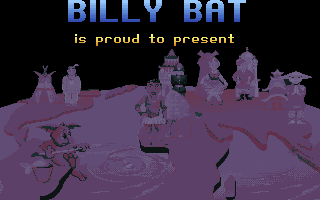
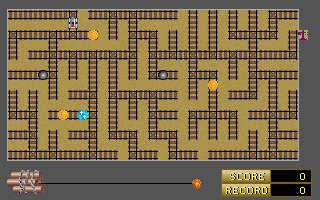
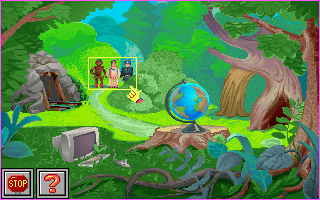
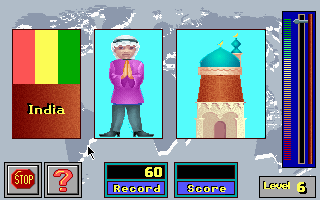
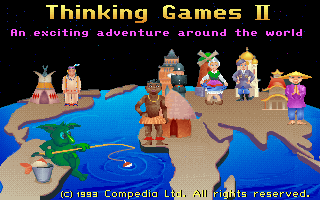
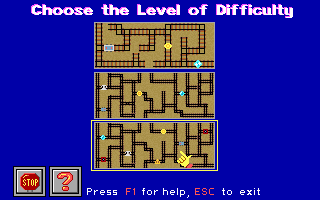



Reviews
There are no reviews yet.